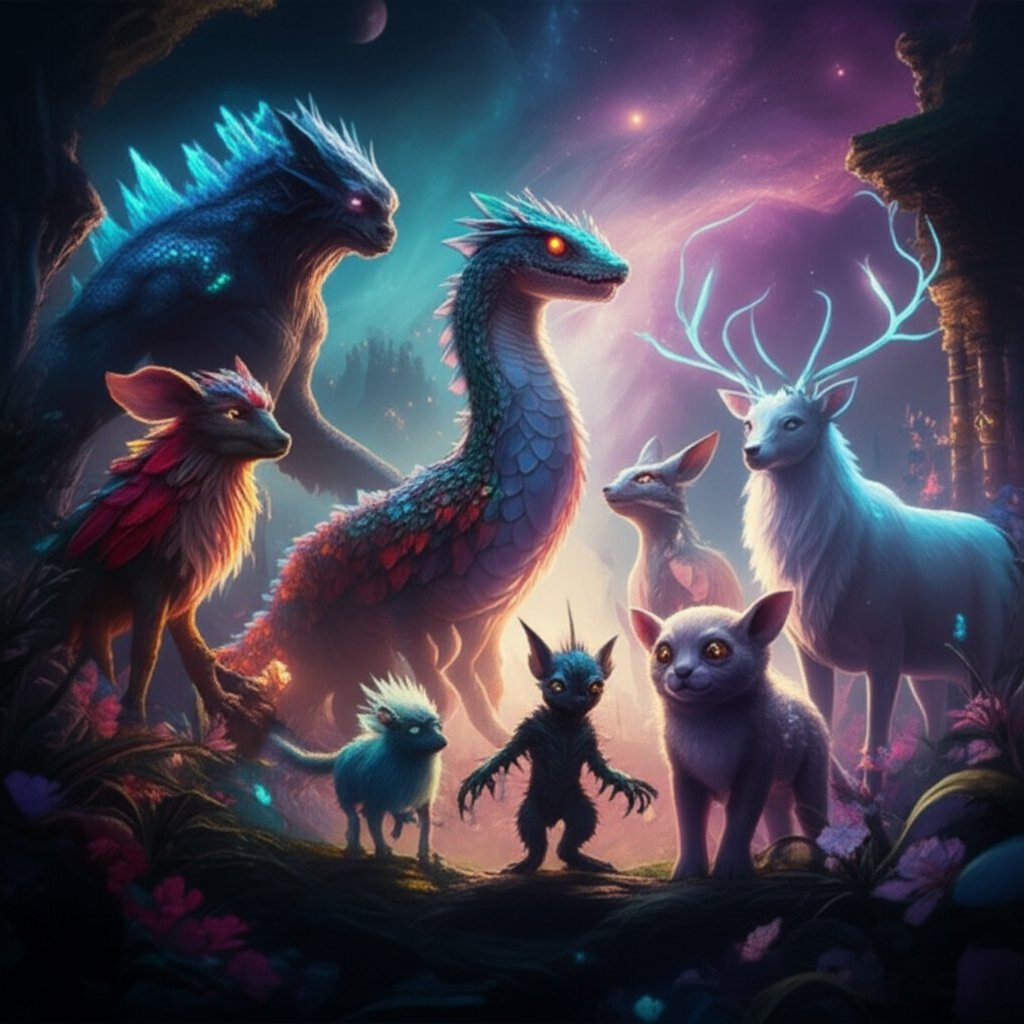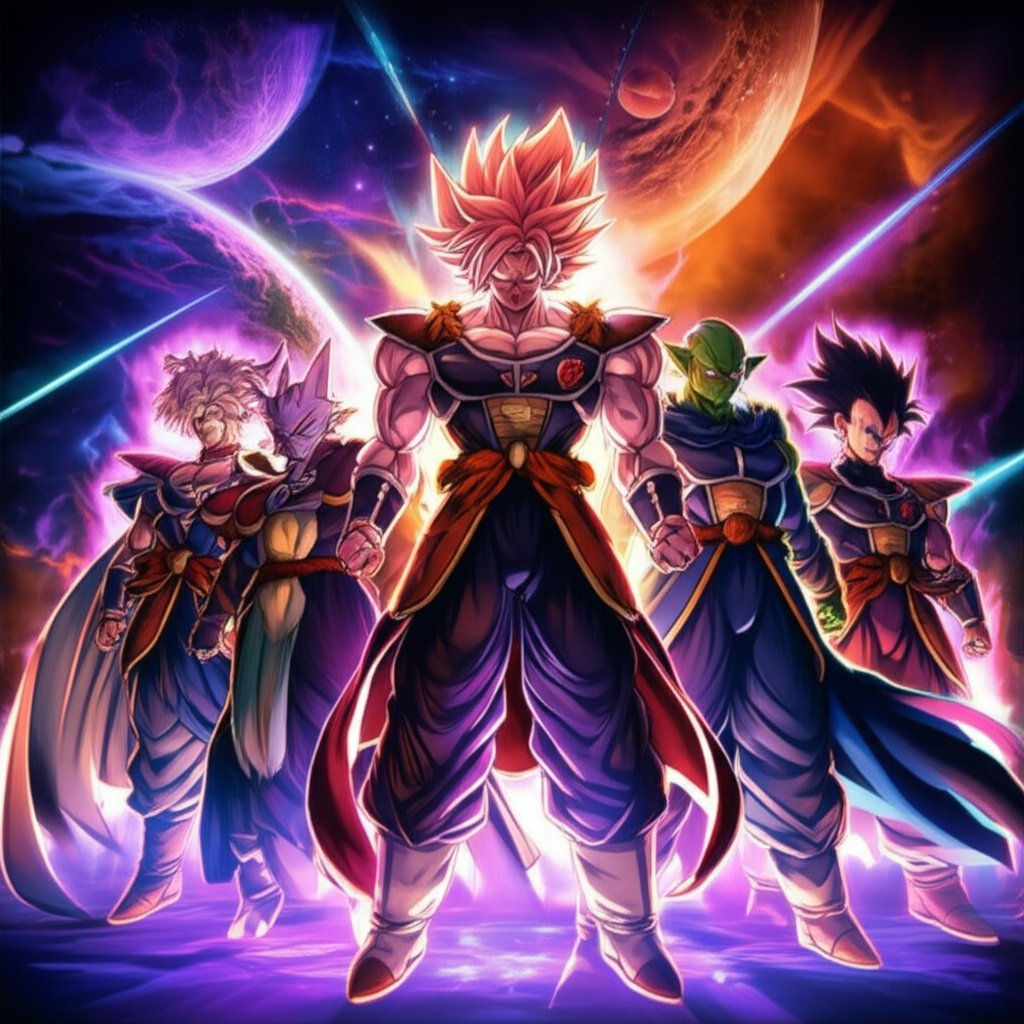Introduction to the Goblin Name Generator
Ever tried to create a goblin character, only to get stuck on the perfect name? You’re not alone. Whether you’re building a mischievous rogue for your next tabletop RPG session, designing a quirky NPC for a video game, or crafting a memorable villain in your latest story, finding just the right goblin name can be surprisingly tough. That’s where a goblin name generator comes in handy, offering inspiration and saving time for creators of all kinds.
But why does the right name matter so much? In fantasy settings, names do more than identify a character—they set the tone, hint at personality, and even shape a reader’s or player’s expectations. The best fantasy goblin names capture the essence of goblins: tricky, cunning, and full of chaotic energy. A name like “Snag Grimefoot” or “Trix Snatchbelly” instantly conjures images of sneaky antics and wild adventures.
- In tabletop RPGs like Dungeons & Dragons, a unique goblin name can make your character stand out and feel authentic.
- For game developers and writers, a memorable name adds depth and believability to fantasy worlds.
- Even pet owners or fans looking for fun nicknames can use these tools for creative inspiration.
Sounds complex? This guide breaks it down step by step. We’ll start by exploring what makes a goblin name truly “goblin,” then dive into naming conventions across popular universes like D&D and World of Warcraft. You’ll find tips for specialized characters, ideas for clans and towns, and even tricks for injecting humor. By the end, you’ll have all the tools you need to choose or create the perfect goblin name for any scenario.
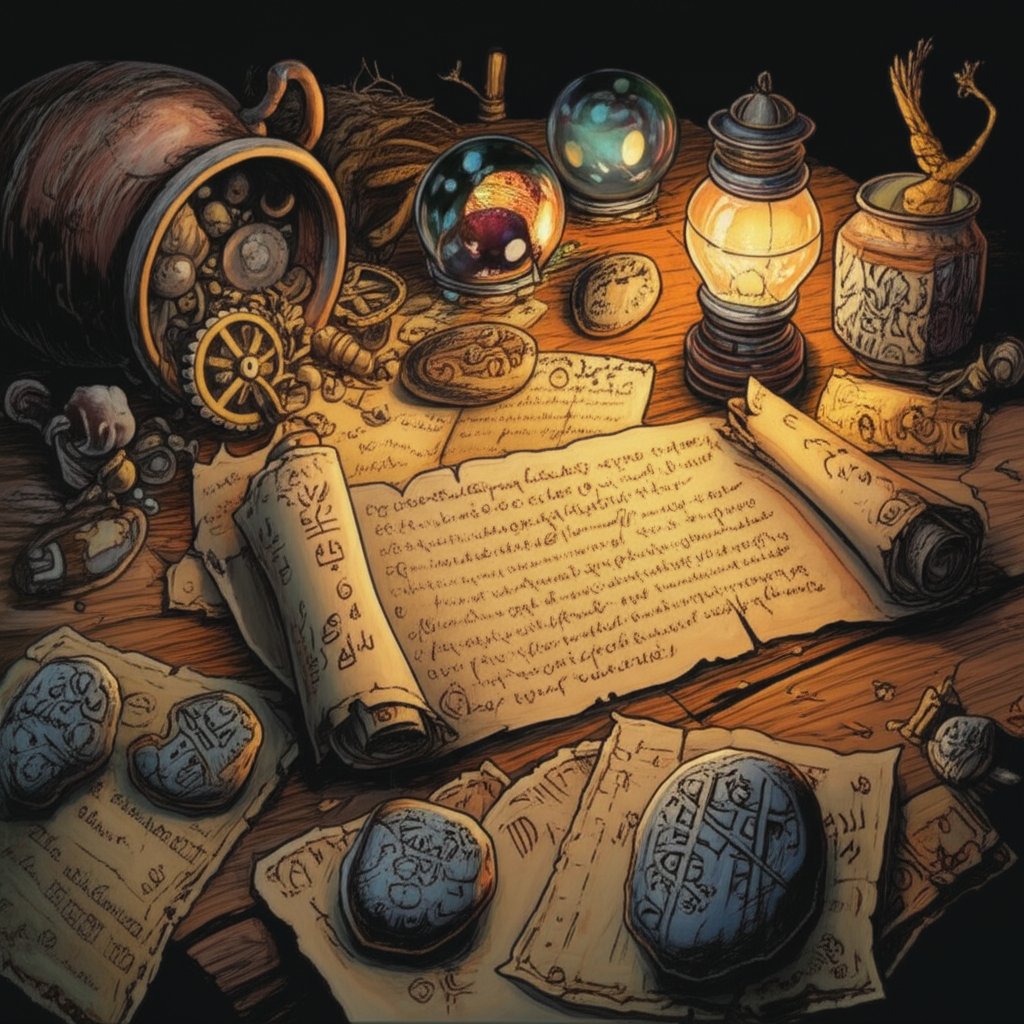
Understanding the Core Elements of a Great Goblin Name
When you hear a name like "Grizzle" or "Sugrik," does it instantly make you think of a sneaky, mischievous creature lurking in the shadows? That’s no accident. Crafting a name that feels truly "goblin" is both an art and a science—and it all starts with understanding the core goblin name characteristics that set these monikers apart in fantasy worlds.
What Makes a Name Feel Goblin?
Imagine you’re building a goblin for a D&D campaign or writing a story set in a bustling goblin warren. The right name can bring your character to life, hinting at their personality, role, or even their environment. But what exactly makes a name sound goblin-esque? Let’s break it down:
- Guttural and Harsh Sounds: Goblin names often feature guttural, hard consonants—think "g," "k," "r," and "z." These sounds make names feel rough and wild, matching the goblin’s unpredictable nature.
- Sharp Consonants: The use of "sn," "gr," "kr," or "sk" clusters gives names a jagged, edgy feel—perfect for creatures known for their cunning and mischief.
- Short, Punchy Syllables: Most goblin names are one or two syllables long, making them quick to say and easy to remember. Examples like "Ug," "Druz," or "Kryll" capture this simplicity.
- Evocative Meanings: Names often hint at personality traits, physical features, or roles—"Griphook" (sharpened claw), "Nagnok" (stony-faced), or "Gazlowe" (cunning engineer) all tell you something about the character.
- Mononymic Structure: Unlike elves or dwarves, goblins rarely have surnames. Their names stand alone, reflecting a society that values individuality or lacks rigid familial ties.
- Dark or Earthy Themes: Many names include elements that evoke the goblin’s environment—darkness, caves, muck, or shadows. Think "Mucksnarl" or "Zarok" (mystic shadow).
How Naming Reflects Goblin Archetypes
Goblin naming conventions aren’t random—they’re rooted in the archetypes these creatures embody across folklore and fantasy. You’ll notice:
- Mischief and Cunning: Names with quick, sharp sounds (like "Snag" or "Trix") evoke a sense of trickery and agility.
- Greed and Ambition: Names that sound harsh or include references to treasure, gold, or power ("Grizzle," "Ragnuk") reflect goblins’ lust for riches and status.
- Physical Quirks: Some names highlight a goblin’s unique features or skills—"Griphook" (sharp claws), "Gnarlak" (twisted one), or "Urgruff" (wildling).
- Ambiguity: Many goblin names are not gender-specific, adding to their mysterious and enigmatic presence in fantasy settings.
By recognizing these patterns, you can start to mix and match sounds, syllables, and meanings to create names that instantly feel at home in any goblin lair or adventure. Ready to see how these rules play out in practice? Next, we’ll dive into how Dungeons & Dragons brings goblin names to life with even more nuance and context.
Generating Authentic Goblin Names for Dungeons & Dragons
When you’re prepping for your next D&D session, have you ever found yourself staring at a blank page, searching for the perfect goblin name? Whether you’re a Dungeon Master building a new tribe of antagonists or a player designing a quirky goblin rogue, the right name can make all the difference. That’s why so many turn to a dnd goblin name generator or a 5e goblin name generator for inspiration—but what makes a name feel truly at home in the world of Dungeons & Dragons?
The D&D Approach: Names with Meaning and Context
In D&D, goblin names aren’t just random sounds—they’re loaded with context. You’ll notice that many names reflect:
- Tribal Affiliation: Goblins often belong to distinct tribes, and names may echo tribal history or values. For example, a member of the "Stonenose Tribe" or the "Bluetooth Clan" instantly conjures a sense of community and backstory.
- Role or Status: Names can hint at a goblin’s place in the tribe—leaders, scouts, shamans, or warriors often have names or honorifics that set them apart. A chieftain might be called "Belch of the Bluetooth," while a rogue could be "Snack the Sneak."
- Physical or Personality Traits: Names frequently describe quirks, features, or habits—think "Mudleg," "Snot," or "Leechbrain." These names help players and DMs quickly visualize the character.
How to Build a D&D Goblin Name
Sounds complex? Here’s a breakdown of how you might construct a campaign-ready name using classic D&D conventions and tables:
- Start with a base name—often short, punchy, and harsh-sounding (like "Griktor" or "Tugly").
- Add a descriptor or honorific if needed, especially for notable NPCs (e.g., "of the Redclaw").
- For tribal leaders or shamans, combine a base name with a title: "Jorg the Stinky" or "Knork of the Ironjaw."
| Type | Example Name | Naming Notes |
|---|---|---|
| Warrior | Griktor Mudleg | Combines a tough-sounding first name with a physical trait |
| Rogue | Snack the Sneak | Uses playful, stealthy descriptors |
| Shaman | Barkus of the Shadowheart | Links the name to mystical or tribal elements |
| Chieftain | Belch of the Bluetooth | Honorific highlights leadership and tribal identity |
| Scout | Gnatface Quickfoot | Mixes animal imagery with agility |
Tips for Instant Inspiration
- Use a dnd goblin name generator or 5e goblin name generator to roll up quick options—these often combine syllables, descriptors, and tribal names for variety (Spelljammer Blog).
- Mix and match from name tables, such as those offering lists like "Barkus," "Jhibi," or "Worm."
- Don’t be afraid to get creative—add apostrophes or hyphens for a more goblin-like twist (e.g., "Grik’tor" or "Mud-leg").
- Consider the goblin’s backstory, tribe, and personality when choosing or generating a name.
By weaving together tribal context, character roles, and distinctive goblin sounds, you’ll create names that not only fit seamlessly into your campaign but also bring your goblin NPCs and PCs to life. Next, let’s dive into how goblin naming conventions shift in a world that’s all about commerce and cunning—World of Warcraft.
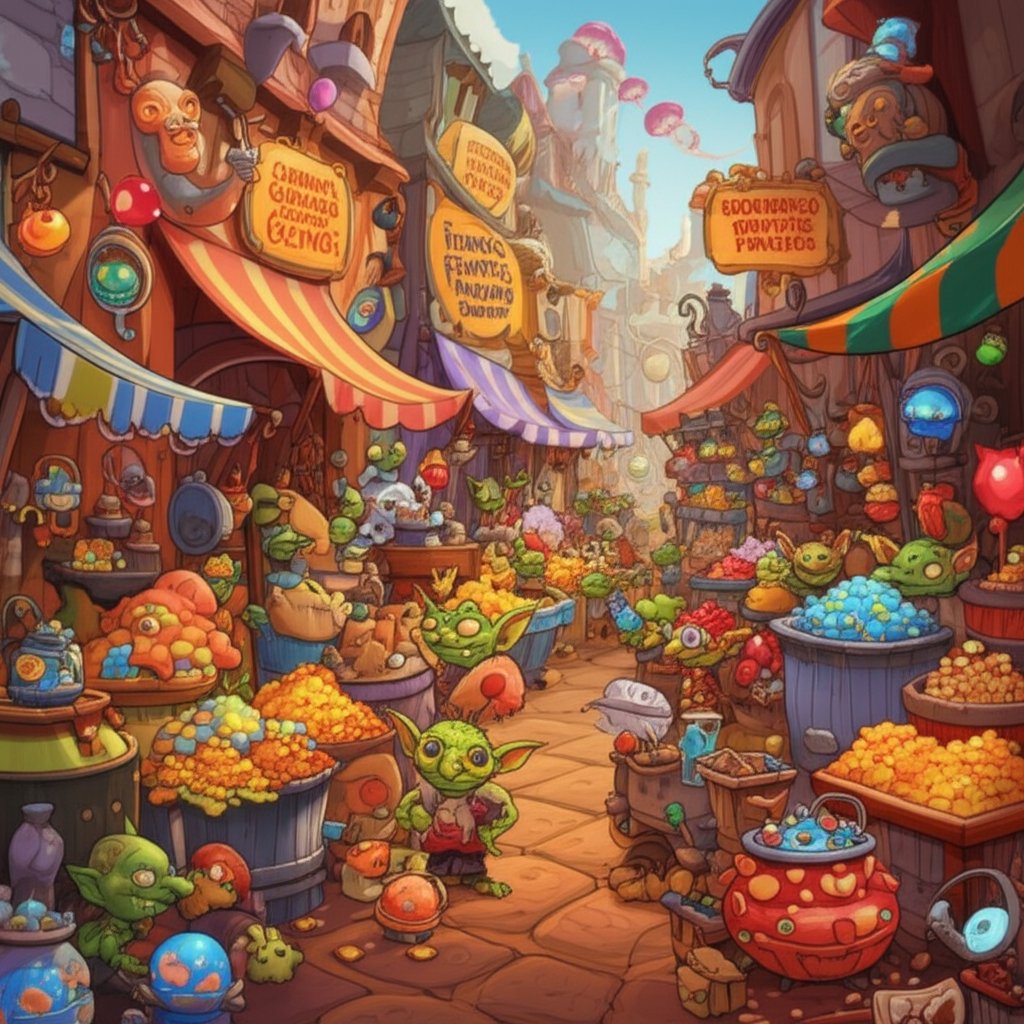
Creating Perfect Goblin Identities for World of Warcraft
Ever wonder why World of Warcraft goblin names instantly make you think of wild inventions, cutthroat deals, and explosive business ventures? If you’ve used a wow goblin name generator, you’ve probably noticed how these names capture the spirit of Azeroth’s most tech-savvy and profit-driven race. But what’s the secret sauce behind these memorable monikers—and how can you craft names that truly fit the WoW goblin vibe?
What Sets WoW Goblin Names Apart?
Imagine you’re rolling a new goblin engineer or a crafty merchant. The right name doesn’t just sound goblin—it tells a story. WoW goblin names are packed with personality and cultural cues that set them apart from their fantasy cousins. Here’s what you’ll find at the core of great WoW goblin name ideas:
- Capitalist Themes: Names often hint at wealth, trade, or profit, reflecting goblins’ obsession with making a quick buck. Think “Goldtooth,” “Cashgrin,” or “Profitblast.”
- Tech and Engineering References: Many names play with technology, gadgets, and explosive inventions—"Bombsprocket," "Sparkfizzle," or "Greasebolt" are classic examples (Gnomecore).
- Greed and Cunning: Surnames like “Hagglegleam” or “Multishiv” emphasize sharp business instincts and a willingness to bend the rules.
- Playful, Jumpy Syllables: First names are typically two short, energetic syllables—"Krixxik," "Grizzek," or "Moxie." For female goblins, endings like "-y" or "-ie" (e.g., "Trixxy," "Izzy") add a quirky, approachable twist.
- English-Based Surnames: Unlike some fantasy naming systems, WoW goblin last names are usually in English, making them instantly recognizable and often punny.
How to Generate Authentic WoW Goblin Names
When you use a wow goblin name generator, you’ll notice names that combine these elements for maximum effect. Here’s a quick formula you can use for inspiration:
- First Name: Two bouncy syllables, often ending in a hard consonant for males (“Krixxik,” “Radek”) or “-y/-ie” for females (“Moxie,” “Trixxy”).
- Surname: Two English words mashed together, one related to tech, money, or mischief (“Bombsprocket,” “Goldtooth,” “Fizzfusion”).
Try mixing and matching to create names like “Izzy Greasebolt,” “Grizzek Profitblast,” or “Trixxy Multishiv.” These instantly evoke the world of goblin trade, invention, and adventure.
Adding Cultural Depth: Beyond the Basics
Want your goblin names to stand out, even in the bustling markets of Azeroth? Consider weaving in themes from other cultures or languages to add richness and uniqueness. For example, tools like the Chinese Name Generator can inspire creative twists. Imagine a goblin syndicate with names that echo ancient traditions, or a tech guild where each member’s name hints at a deeper meaning—like “Qiang Goldwire” (strength + wealth) or “Mei Sparkle” (beauty + innovation).
- Blend Cultural Motifs: Use names that combine English tech terms with culturally inspired given names for a unique, multicultural feel.
- Assign Meaning: Let each name carry a subtle story—perhaps referencing a famous invention, a core value, or a legendary deal.
- Systematic Naming: Establish patterns for different goblin factions or professions, drawing inspiration from real-world naming conventions to create internal consistency.
By infusing your WoW goblin names with thoughtful themes and cross-cultural inspiration, you’ll not only generate memorable characters but also add depth to your world-building. And if you’re looking for a fresh batch of goblin name ideas, experimenting with generators that draw on diverse traditions can open up new creative directions.
Ready to see how goblin names shift across other fantasy universes? Next, we’ll compare naming styles in Pathfinder, Warhammer, and Harry Potter to help you tailor names for any world you imagine.
Finding Goblin Names for Pathfinder and Other Universes
Ever wondered how goblin names change from one fantasy universe to another? If you’ve tried a pathfinder goblin name generator or searched for harry potter goblin names, you’ll know every world puts its own twist on these mischievous creatures. But what actually sets them apart—and how do you choose the right style for your story, campaign, or character?
Why Naming Conventions Vary Across Worlds
Imagine you’re switching from a gritty Pathfinder campaign to the magical world of Harry Potter. Suddenly, the same goblin character might need a totally different name to fit in. That’s because each universe gives goblins unique traits, roles, and cultural backgrounds. These differences shape everything from the sound of their names to the meanings behind them.
Let’s break down some of the most popular fantasy settings and see how their naming conventions compare:
| Universe | Goblin Traits | Naming Style | Example Names |
|---|---|---|---|
| Pathfinder | Chaotic, pyromaniac, superstitious, love for singing and rhymes | Short, punchy, often silly or onomatopoeic; names may sound like nicknames or childish taunts | Skrib, Chuffy, Mogmurch, Poog |
| Warhammer | Brutal, tribal, often savage; emphasis on violence and hierarchy | Harsh, guttural, sometimes multi-part with tribal titles | Snagla, Gitilla, Skarsnik |
| Harry Potter | Skilled craftsmen, bankers, shrewd negotiators; control wizarding economy | Two-syllable, rough and guttural; sometimes descriptive; no known female names | Ragnok, Griphook, Bogrod, Gringott, Eargit |
| Classic Fantasy (e.g., Tolkien) | Minions of evil, sneaky, cowardly, often serve stronger villains | Rough, simple, often monosyllabic or two-syllable; rarely descriptive | Snaga, Muzgash, Ufthak |
How to Tailor Names for Your Setting
When you’re looking for the perfect goblin name, start by asking: What role do goblins play in your world? Are they comic relief, cunning traders, or fierce warriors? Your answer will guide your choice of naming style and help you decide which generator—or custom approach—fits best.
- For Pathfinder: Lean into playful, quirky names. Think of short, bouncy sounds and even rhymes. Pathfinder goblins are famous for their chaotic sense of humor and love for fire, so names like "Poog" or "Chuffy" set the right tone.
- For Warhammer: Choose names that sound menacing and tribal. Add titles or clan names if you want to evoke the feeling of a warband leader or shaman.
- For Harry Potter: Stick to the two-syllable, guttural format. Since female goblins aren’t mentioned in the series, names are typically unisex. Descriptive names like "Griphook" or "Eargit" work well—these often hint at the goblin’s job or personality.
- For Classic Fantasy: Go for names that are short, rough, and easy to remember. These goblins are usually background villains, so focus on simplicity and menace.
Tips for Using Generators and Customizing Names
- Try a pathfinder goblin name generator for playful, outlandish options. Mix and match syllables for even more variety.
- For Harry Potter, use a generator that draws from canon names to keep your goblin feeling authentic to the wizarding world.
- Don’t be afraid to adapt names. If you love a Warhammer goblin name, tweak it to fit your Pathfinder campaign by shortening or softening the sounds.
- Think about the goblin’s story—are they a banker, a pyromaniac, or a warlord? Let their role inspire a fitting name.
Every fantasy universe gives goblins its own flavor. By understanding these differences, you can create names that feel right at home—whether you’re delving into the dungeons of Pathfinder, navigating the halls of Gringotts, or leading a Warhammer horde. Up next, we’ll cover how to craft names for female goblins and specialized characters, so you’re ready for any scenario.
Naming Your Female Goblin or Specialized Character
Ever struggled to find the right name for a female goblin or a character with a distinct role, like a rogue or mage? If you’ve searched for a female goblin name generator or a goblin rogue name generator, you know these niche needs can be tricky. Most generators churn out unisex or male-leaning names, but with a few creative tweaks, you can craft names that highlight your character’s identity and backstory. Let’s break down how to approach these specialized goblin names—whether you’re building a cunning rogue, a battle-hardened warrior, or a rare female goblin leader.
How to Create Authentic Female Goblin Names
In many fantasy worlds, goblin names are short, guttural, and often unisex. But if you want your female goblin to stand out, you’ll want to add subtle touches that hint at femininity or uniqueness—without straying too far from goblin naming conventions. Here’s how:
- Length and Syllables: Female goblin names sometimes use slightly longer or softer-sounding endings than their male counterparts—think two or three syllables rather than one. For example, names like "Zarika," "Grizza," or "Morga" maintain goblin grit but feel distinct.
- Endings: Try adding vowels or softer consonants at the end—"-a," "-i," or "-ie"—to evoke a feminine touch: "Trixie," "Lugra," or "Snaggie."
- Nicknames: Female goblins, like their male peers, often have nicknames based on traits or deeds. Use descriptors that hint at agility, cleverness, or even beauty (in goblin terms): "Quickfang," "Sootspark," or "Grinlash."
- Keep the Grit: Don’t make names too elegant or flowery—goblin culture values toughness and resourcefulness, so even female names should sound bold and memorable.
Need a few ready-made examples? Try these for inspiration:
- Grizza
- Morga
- Trixie Sootspark
- Lugra Quickfang
- Zarika Grinlash
Specialized Goblin Names by Role
When you create a goblin with a specific class or profession—like a rogue, mage, or warrior—the name can reflect their skills, reputation, or quirks. Here’s how to tailor names for specialized characters:
- Rogues: Names for sneaky goblins often use sharp sounds, quick syllables, and references to stealth or trickery. Examples:
- Skulk
- Slipshadow
- Trix Snapblade
- Nibble Sneaktoe
- Grik the Nimble
- Mages or Shamans: Magical goblins might have names that hint at mystical power or ritual. Try:
- Zarika Hexmoss
- Morga Runejaw
- Fizzik Spellgrin
- Sootspark the Wise
- Grizza Charmspit
- Warriors: Tough goblins often get names that evoke strength, battle scars, or ferocity. Think:
- Kragg Bonecrush
- Lugra Ironhide
- Brakka Skullbash
- Grinlash Steeljaw
- Snaggie Gorefang
Quick Checklist: Crafting Unique Goblin Names
| Step | Tips |
|---|---|
| 1. Choose a base name | Start with a short, punchy, or slightly longer name for females |
| 2. Add a role-based descriptor | Use words that reflect the character’s class or skills |
| 3. Consider a nickname | Highlight a unique trait or achievement |
| 4. Keep the goblin feel | Stick to gritty, harsh consonants and avoid overly elegant sounds |
By blending these strategies, you can generate names that fit any goblin—whether she’s a cunning thief, a powerful shaman, or a battle-hardened warrior. These approaches work whether you’re using a female goblin name generator, a goblin rogue name generator, or crafting names by hand. Next, we’ll explore how to expand your world by naming goblin clans, tribes, and towns—so every corner of your fantasy setting feels alive.
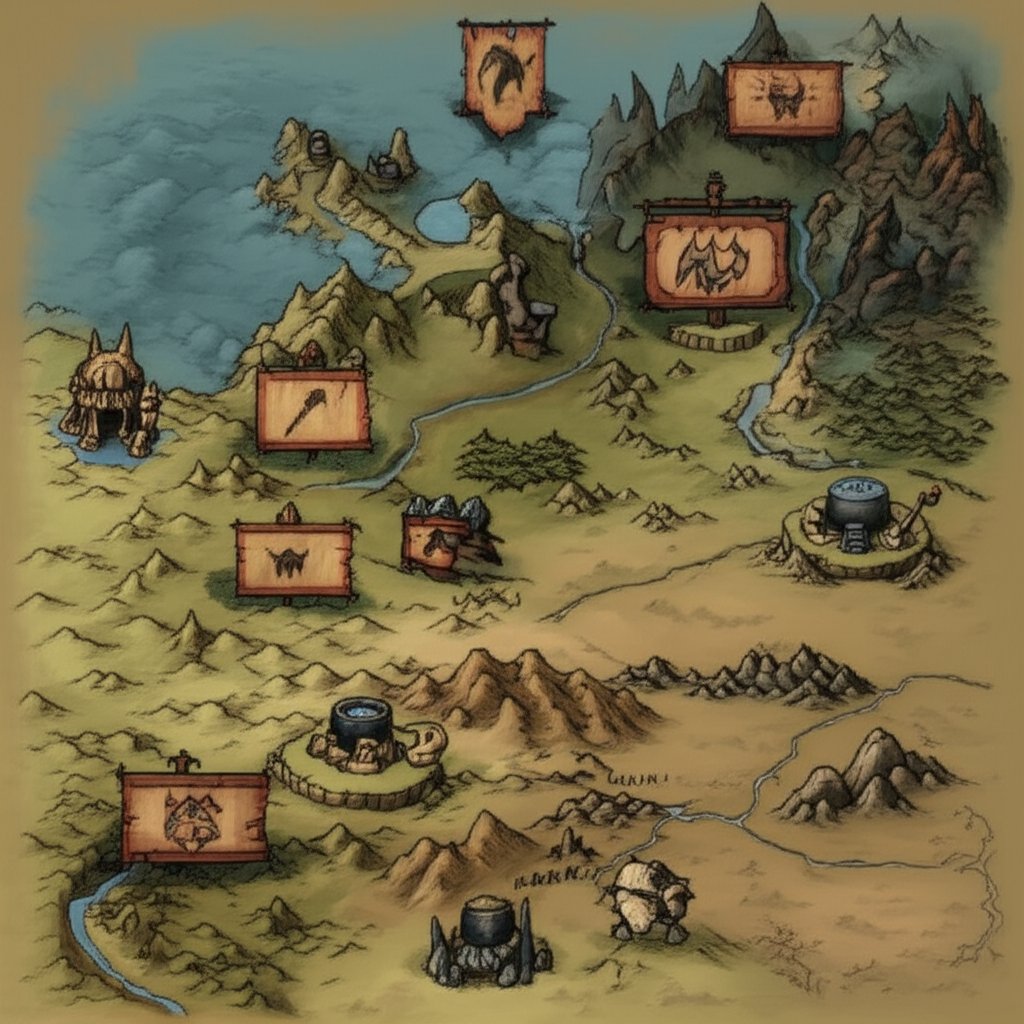
Forging Names for Goblin Clans, Tribes, and Towns
Ever tried to name an entire goblin clan, or invent a town that feels alive with goblin mischief? Sounds complex? It doesn’t have to be. Whether you’re world-building for a campaign, writing a fantasy novel, or just experimenting with a goblin clan name generator, the right naming strategy can make your setting instantly immersive. Let’s break down practical approaches for inventing evocative names for goblin societies—and see how these methods can even inspire real-world branding or personal identity.
How Goblin Societies Use Names: Culture and Identity
In fantasy worlds, goblin clans and towns aren’t just random collections of syllables. Their names tell stories—about their history, environment, values, and even their quirks. According to Adazing, goblin tribes often use names to reflect key traits or achievements, reinforcing cultural identity and unity. For example, a tribe living in a dark, misty forest might call themselves the “Gloomshade Clan,” while a group known for their fierce warriors could be the “Skullcrag Bastion.”
Actionable Naming Strategies for Clans, Tribes, and Towns
When you want to create memorable goblin place names, try these proven patterns and techniques:
- Descriptive Prefix + Feature Suffix: Combine a trait, element, or animal with a geographic or structural term. Examples:
- Gloomshade Glade (mysterious forest clearing)
- Skullcrag Bastion (fortress atop a cliff)
- Crimson Forge (smithy known for its fires)
- Frostbite Cliff (icy, dangerous outpost)
- Portmanteau (Word Smash): Merge two meaningful words—think "Banshee’s Rest" or "Warborn Parchment." This gives your goblin town or tribe a sense of history and myth.
- Language Borrowing: Use words from Old Norse, Latin, or even modern languages to add depth. For example, "Grimholt" (grim + Norse "holt" for forest) or "Zarnak Vale." This can make your setting feel ancient and rooted.
- Nature and Environment: Reflect the local landscape or resources—like "Hollow Gourd Tavern" (a meeting place in a pumpkin patch) or "Shattered Helm" (a battle-scarred oasis).
- Clan or Leader Names: Name a town after its founder or a legendary hero—"Grikka’s Crossing," "Snaggletooth Hold." This echoes real-world place-naming traditions.
- Functional Descriptors: Use practical or humorous names based on the town’s purpose—"The Warborn Parchment" (library of battle records), "The Whistling Thicket" (grove with eerie sounds).
Formulas for Naming Goblin Clans and Towns
| Formula | Example | Effect |
|---|---|---|
| [Trait/Theme] + [Place/Structure] | Gloomshade Glade | Mysterious, atmospheric |
| [Legendary Figure] + [Landmark] | Grikka’s Crossing | Personal, historic |
| [Animal/Action] + [Geographic Feature] | Snarltooth Marsh | Evokes danger, wildness |
| [Resource] + [Industry/Function] | Crimson Forge | Highlights clan’s skills |
| [Adjective] + [Abstract Noun] | Banshee’s Rest | Mythic, evocative |
From Fantasy to Branding: Names as Identity
Imagine you’re not just naming a goblin town, but building a brand or crafting your own online persona. The strategies above aren’t just for fantasy—they’re powerful tools for creating memorable, meaningful names in the real world, too. In fact, the Chinese Name Generator offers a unique way to draw inspiration from global naming traditions. Its AI-powered engine lets you explore names with deep cultural roots, matching traits or values you want to express—whether that’s cunning, resilience, or creativity.
- Find a core trait or story: What does your clan/town/brand stand for? Start from there.
- Use generators for inspiration: Tools like a goblin town name generator or culturally rich generators can spark new ideas you might never have considered.
- Mix and match: Don’t be afraid to blend languages, themes, or naming patterns for something truly original.
By treating goblin naming as a creative process—rooted in culture, environment, and story—you’ll forge names that make your world (or brand) unforgettable. Next, we’ll look at how general fantasy name generators can fuel even more unique ideas for goblin characters and places.
Using General Fantasy Name Generators for Unique Goblin Ideas
When you’re brainstorming names for goblin characters or places, do you reach for a fantasy goblin name generator or try your luck with a broader random goblin name generator? The answer depends on your creative needs, timeline, and how much originality you want in your project. Let’s explore how general fantasy name generators stack up against specialized goblin tools—and help you decide which approach fits your next adventure.
General Fantasy Name Generators: Pros and Cons
Imagine you’re designing a new goblin NPC, but the usual goblin name lists start to feel repetitive. That’s when a general fantasy name generator can shake things up. These tools draw from a wide variety of naming conventions, offering unexpected combinations and fresh inspiration. But are they always the right choice?
Pros
- Broad Creativity: General generators aren’t limited to goblin-specific sounds or themes. They can spark ideas you’d never find in a focused list, helping you break creative blocks.
- Novelty and Variety: By pulling from different cultures, eras, or genres, these tools introduce unique elements that make your goblin names stand out in a crowded fantasy world.
- Time-Saving: Need a lot of names fast? Many random name generators can produce long lists in seconds, perfect for populating a goblin horde or town.
- Testing and Prototyping: Designers and writers can use them to fill in placeholders during world-building or drafts, making the creative process smoother and more efficient.
Cons
- Lack of Authenticity: Without goblin-specific rules, some names may not feel gritty, mischievous, or true to goblin lore. You might get names that sound more elven or dwarven than goblin.
- Extra Editing Needed: You may need to tweak or combine generated names to match your world’s tone and conventions.
- Potential Overlap: If you’re using a popular generator, there’s a chance others have already picked the same names for their characters or settings.
When to Use Each Type of Generator
| Scenario | Best Tool | Why? |
|---|---|---|
| Quick inspiration for minor NPCs | General Fantasy Generator | Fast, varied, and easy to adapt for placeholders or background characters |
| Creating main characters or lore-rich names | Specialized Goblin Generator | Ensures names fit goblin culture and storytelling conventions |
| World-building with unique flair | Mix of Both | Start with general ideas, then refine using goblin-specific tools |
| Testing game or app features | Random Name Generator | Efficient for generating large data sets quickly |
Tips for Getting the Most Out of Name Generators
- Use a general fantasy goblin name generator for brainstorming, then polish the results for tone and lore.
- Combine elements from several generated names—mix syllables, endings, or themes to create something new.
- Don’t be afraid to edit or reject names that don’t fit your vision. The goal is to spark creativity, not just accept the first result.
- For standout characters or places, always check that the name matches your world’s goblin naming conventions and feels authentic.
By blending the flexibility of random tools with the specificity of goblin-focused generators, you can fill your fantasy setting with names that are both original and true to the goblin spirit. Next, let’s explore how humor and personality can take your goblin names to the next level—making them truly unforgettable.
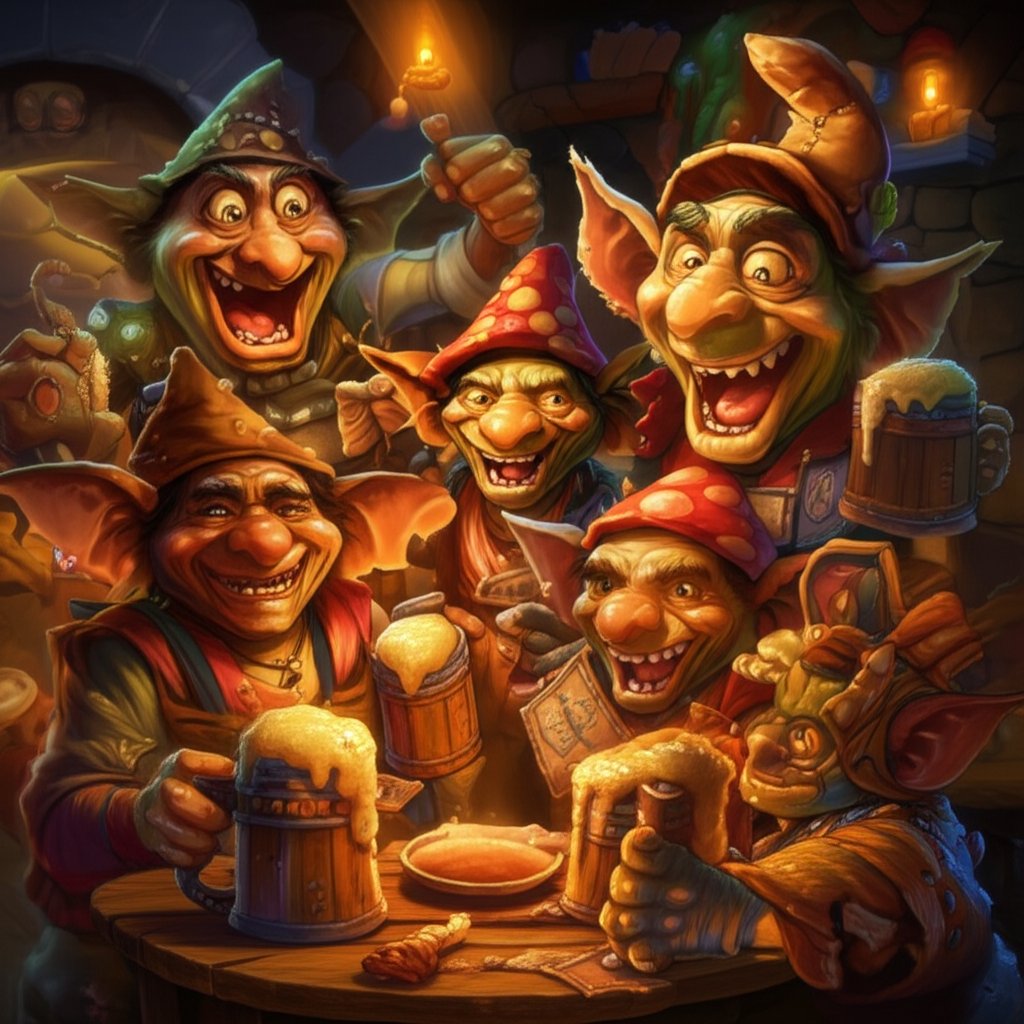
Injecting Humor and Personality into Your Goblin's Name
Ever wanted your goblin character to get a laugh the moment their name is spoken? When you use a funny goblin name generator or brainstorm your own humorous goblin names, you unlock a whole new level of personality and memorability. But how do you actually create names that are more than just a random string of syllables—names that make your players, readers, or friends smile every time?
Why Humor Works for Goblin Names
Goblins are the tricksters and pranksters of the fantasy world. Their names often reflect their mischievous, quirky, or downright silly nature. Humor not only makes your character stand out, but it also gives everyone at the table or in your story an instant sense of who that goblin is—before they even say a word.
Techniques for Creating Humorous Goblin Names
Here are some tried-and-true strategies for crafting funny goblin names, complete with examples you can use or adapt:
- Onomatopoeia: Use names that mimic sounds—perfect for goblins who are always causing a ruckus or getting into trouble.
- Bloop
- Splat
- Whiffle
- Clank
- Burp
- Silly Descriptive Titles: Combine a physical quirk, habit, or personality trait with a noun or verb. This paints a vivid (and often hilarious) picture.
- Snickerfizz
- Muddlefoot
- Gobblegut
- Fumble
- Dizzy
- Absurd Word Combinations: Smash together two unrelated or unexpected words for maximum comedic effect.
- Flapdoodle
- Squigglequartz
- Blunderbop
- Snarfle
- Kerfuffle
- Over-the-Top Alliteration: Double down on similar sounds for a name that’s fun to say and easy to remember.
- Fizzlebang
- Gigglegrain
- Wobblewand
- Cracklethorn
- Snickerstream
- Playful Nicknames: Use familiar, almost childlike nicknames that hint at the goblin’s antics.
- Goof
- Lollygag
- Noodle
- Doodle
- Loopy
Tips for Personalizing Your Humorous Goblin Name
- Think about your goblin’s most memorable trait—are they clumsy, loud, sneaky, or just plain odd? Let that guide your name choice.
- Mix and match techniques: Try combining onomatopoeia with a silly title (like "Splatfoot" or "Bloopnose").
- Don’t be afraid to get weird! The more unexpected, the funnier and more memorable your goblin will be.
By using these techniques, you’ll not only generate names that get a laugh, but also create goblin characters with real personality and charm. Next up, we’ll wrap up the guide with key takeaways and inspiration for making every goblin name—funny, fierce, or fantastical—fit perfectly in your world.
Conclusion
When you look back at your favorite fantasy stories or most memorable RPG sessions, what stands out? Often, it’s those vivid, quirky goblin names—each one perfectly suited to its world, character, and mood. But how do you ensure your names hit the mark every time? Let’s wrap up with the key lessons from this guide and some practical next steps for every world-builder, writer, or gamer searching for the best goblin name generator or truly unique goblin names.
What Makes a Goblin Name Truly Great?
- Context is everything: The right name should reflect your goblin’s role—whether that’s a cunning rogue, a mischievous merchant, or a legendary clan leader. Ask yourself: Does the name fit the tone and lore of your world?
- Sound and structure matter: Harsh consonants, short syllables, and evocative meanings make names feel goblin-esque. Don’t be afraid to experiment with unexpected combinations or playful twists.
- Cultural depth adds richness: Drawing inspiration from different languages or traditions, such as using tools like the Chinese Name Generator, can help you create names that sound exotic, meaningful, and fresh—even to veteran fantasy fans.
- Humor and personality bring characters to life: Whether you want a name that gets a laugh or one that feels ancient and mysterious, use the techniques outlined in this guide to give every goblin a distinct voice.
Ready to Create Your Own Goblin Legacy?
- Start with a generator that matches your world’s needs—specialized for lore-rich campaigns, or general for wild brainstorming.
- Mix and match strategies: blend syllables, add cultural references, or invent new naming formulas for clans, towns, and individuals.
- Don’t hesitate to try tools outside your comfort zone. For example, a culturally rich name generator can inspire patterns and meanings you might never have considered, giving your goblin society a unique edge.
- Above all, have fun! The best goblin names are the ones that make you smile, spark your imagination, or get your players talking.
Imagine the worlds you’ll build when you let creativity—and a few clever tools—lead the way. Whether you’re naming a single sneaky goblin or an entire mischievous tribe, remember: every name is a chance to tell a story. So, dive in, experiment, and let your next goblin name be the spark that brings your fantasy to life!
Goblin Name Generator FAQs
1. How do goblin name generators work?
Goblin name generators use specific patterns and sound combinations—like harsh consonants and short syllables—to instantly create names that fit goblin culture in fantasy worlds. Some tools let you choose themes, roles, or even cultural influences to further customize names for games, writing, or world-building.
2. What makes a good goblin name in Dungeons & Dragons?
A strong DnD goblin name reflects tribal background, role, or unique traits. Names often combine punchy sounds with descriptive titles or nicknames, making them memorable and authentic within the game's lore. Using a generator tailored for DnD ensures names fit the setting perfectly.
3. Can I use goblin name generators for female or specialized goblin characters?
Yes, many generators offer options for female goblin names or let you tweak endings and add descriptors for roles like rogue, mage, or warrior. This helps create distinct identities while keeping names true to goblin naming conventions.
4. How can I make goblin clan or town names more unique?
Combine traits, environmental features, or founder names using formulas like 'Trait + Place' or 'Legendary Figure + Landmark.' For added depth, draw inspiration from various cultures or use tools like the Chinese Name Generator to infuse authenticity and variety into your world-building.
5. What are the benefits of using a culturally rich name generator for goblin names?
Culturally rich name generators, such as the Chinese Name Generator, provide names with meaningful roots and diverse sounds. This allows you to create goblin names that are unique, phonetically distinct, and carry deeper significance, enhancing both character and world authenticity.


